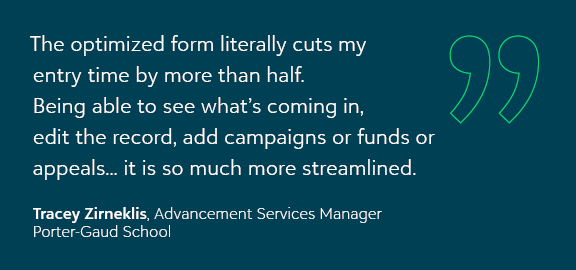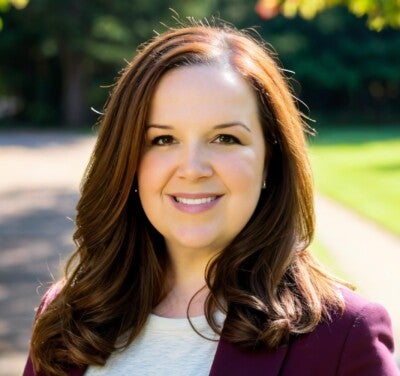Donation Form Best Practices: Tips to Convert More Donors and Increase Gift Size

Your donation form is where inspiration becomes action. Whether you’re feeding families, protecting wildlife, or funding research, this is the moment when a supporter decides to take part in your mission. But with most visitors leaving a form before completing a gift, how do you turn interest into meaningful support?
Some nonprofits are achieving remarkable results. Organizations like Seed Savers Exchange and Washington’s National Park Fund are proving that by layering strategic, data-driven approaches with proven best practices, donation forms can convert more donors and inspire larger gifts. Below, we’ll break down several factors that drive those results:
- Form structure impacts conversion: Multi-page forms can outperform single-page designs for mobile users, which challenges conventional assumptions.
- Strategic ask amounts drive larger gifts: Organizations report significant increases in average donation amounts when they implement a thoughtful ask ladder design.
- High performance is possible: With the right strategy, donation forms can dramatically outperform industry norms during peak campaigns.
- Efficiency matters: Streamlined systems can reduce administrative processing, freeing staff for donor relationship building.
- Integration makes a difference: Connected systems deliver superior donor experiences and cleaner data.
The Data Behind High-Converting Forms
What separates high-performing forms from average ones? According to M+R’s 2025 data, the average nonprofit donation form converts at 11% for desktop users and 8% for mobile users. Organizations using strategic approaches consistently exceed these benchmarks, with some reaching up to 30% conversion rates during peak campaigns.
But the real differentiator goes beyond conversion rates: it’s revenue per visitor. By optimizing for both gift size and completion rate, these organizations maximize the value of every interaction. One nonprofit increased their average donation by 61%, transforming their fundraising economics—proof that small changes can yield major results.
These performance gains come from understanding donor psychology, removing friction from the giving process, and creating experiences that honor the generosity and urgency that brought supporters to your form in the first place.
Strategic Approach: Key Elements That Matter
There are several best practices that consistently impact donation form performance when applied thoughtfully:
Optimized User Experience
A user-friendly donation form should be intuitive, accessible, and emotionally engaging. Focus on:
- Clarity: Use plain language, avoid jargon, and include only the most important fields.
- Accessibility: Apply high-contrast colors, clear labels, and full compatibility with keyboard navigation, mobile devices, and screen readers.
- Emotional design: Reinforce your mission with supportive imagery and impact-driven messaging that reminds donors why their gift matters.
Design That Reduces Friction
Effective donation forms focus on removing barriers rather than adding features. A clean, streamlined layout builds trust and makes it easy for donors to complete their gift. Every element should serve a purpose: if it doesn’t support conversion, it doesn’t belong.
Natural Payment Flow
Design your form progression to match donor decision-making patterns. Successful forms usually collect the donation amount and frequency first, followed by contact information, and finally payment details. This sequence allows donors to commit to their gift amount before encountering any potential friction points.
Visual Trust Indicators
Security concerns remain a significant barrier to online giving. Include clear trust signals throughout your form: SSL certificates, secure payment logos, and privacy policy links. Be sure to maintain visual consistency with your organization’s branding throughout the process to reassure donors they’re giving to the right cause.
Engagement Beyond the Transaction
Plan for donor stewardship before the form is submitted. Design confirmation processes that immediately connect donors to next steps like social sharing opportunities, newsletter signups, or volunteer engagement pathways. This transforms a transactional moment into the foundation for a long-term supporter relationship.
Recurring Gift Strategies
Recurring donors are among the most valuable supporters for nonprofits, offering sustained revenue and deeper engagement over time. Consider creating separate ask ladders for recurring donations and using language that illustrates the impact of sustained giving.
Mobile Optimization: Where Most Giving Happens
Online giving grew by 2.2% in 2024, surpassing even the pandemic-era peak. As more donors give on the go, applying mobile best practices is a necessity.
To create a seamless mobile donation form experience, focus on these core principles:
- Simplified structure: Break longer forms into short, logical steps that are easy to complete on a small screen.
- Touch-friendly design: Use large buttons and form fields that work well with touchscreen navigation.
- Fast load times: Mobile users are quick to abandon slow pages. Prioritize speed to keep them engaged.
- Vertical flow: Design for natural scrolling. Avoid horizontal movement or the need for zooming.
While single-page forms are often recommended for simplicity, real-world testing tells a different story. In an A/B test with Fidelco Guide Dogs, a multi-page form significantly outperformed a single-page version on mobile. The key? Each step was short, focused, and easy to complete—reducing overwhelm and increasing follow-through.
This underscores a critical point: what works in e-commerce doesn’t always apply to charitable giving. Donor decisions are emotional and mission-driven, so consider how your donation form can reflect that.
Ask Strategy That Drives Larger Gifts
The average online gift in 2024 was $197, so we know donors are still willing to give generously online when presented with the right options. Strategic ask amounts can make a big difference in both conversion rates and average gift sizes.
Seed Savers Exchange provides a compelling example: by implementing optimized ask ladders, they increased the average donation amount from $112 to $181. For an organization receiving 1,000 monthly visitors, this type of improvement generates an additional $69,000 annually without any increase in traffic. The key wasn’t just suggesting higher amounts; it was presenting options that felt both aspirational and achievable.
Effective ask strategies balance psychological principles with practical considerations. Sophisticated approaches now use data analysis to personalize ask amounts based on factors like device type, traffic source, and browsing behavior. This can help your organization suggest optimal amounts for each visitor rather than using static defaults, though the core principle remains the same: present options that guide without pressuring.
Beyond the Transaction: Integration and Efficiency
High-performing donation forms work as part of broader fundraising systems rather than operating in isolation. This integration delivers benefits for both donors and organizational efficiency, transforming a transaction point into a relationship-building opportunity.
Martlets, a UK-based hospice, provides a clear example of this approach. After implementing donation forms that connect to their existing software, they saved 14 hours of administrative time during their first end-of-year campaign. This efficiency gain allowed staff to focus on donor relationship building rather than data entry and processing.
The benefits of integration extend beyond administrative efficiency:
- Cleaner data management: Advanced forms can automatically match existing donor records before creating new ones, ensuring clean data and complete donor histories. This prevents duplicate records and enables personalized follow-up from the first interaction.
- Immediate processing: When gifts are recorded instantly, organizations can send immediate acknowledgments and begin stewardship activities right away, building donor confidence.
- Automatic coding: Well-designed forms can automatically associate gifts with specific campaigns, funds, or appeals, eliminating manual work and ensuring accurate tracking.

Testing and Continuous Improvement
The best-performing organizations treat donation form optimization as an ongoing process—not a one-time project. They test, measure, and refine based on real donor behavior starting with high-impact elements:
- Ask amounts and suggested gift ladders
- Form length and required fields
- Mobile vs. desktop experience
- Payment method options
- Trust and security indicators
Before launching a test, define a clear question to be answered. For example: “Will reducing required fields improve mobile conversion?” Run tests long enough to gather statistically valid results and test one variable at a time to truly understand its impact.
Advanced Donation Form Solutions
Modern fundraising platforms have evolved to incorporate many of these best practices into ready-to-implement solutions. These platforms offer both customizable forms for organizations wanting maximum control and optimized forms designed for streamlined donor experiences.
Key capabilities to look for include:
- Proven performance: Look for platforms with demonstrated track records of high conversion rates.
- Cost management features: Some platforms offer ways for donors to cover processing fees, reducing organizational costs while giving supporters control over their gift impact.
- AI-powered optimization: Advanced platforms use data analysis to optimize ask amounts in real-time, improving both conversion rates and average gift sizes.
- Seamless integration: Native integration with fundraising platforms eliminates data silos and reduces administrative overhead.
- Mobile-first design: Forms should automatically adapt to provide optimal supporter experiences across all devices, with particular attention to mobile performance.
By applying data-driven strategies and learning from real-world success stories, you can transform your donation form into a powerful engine for impact that drives deeper engagement, larger gifts, and greater efficiency. You’ll also free up time and energy to focus on what matters most: advancing your mission and building lasting relationships with the supporters who make it possible.


